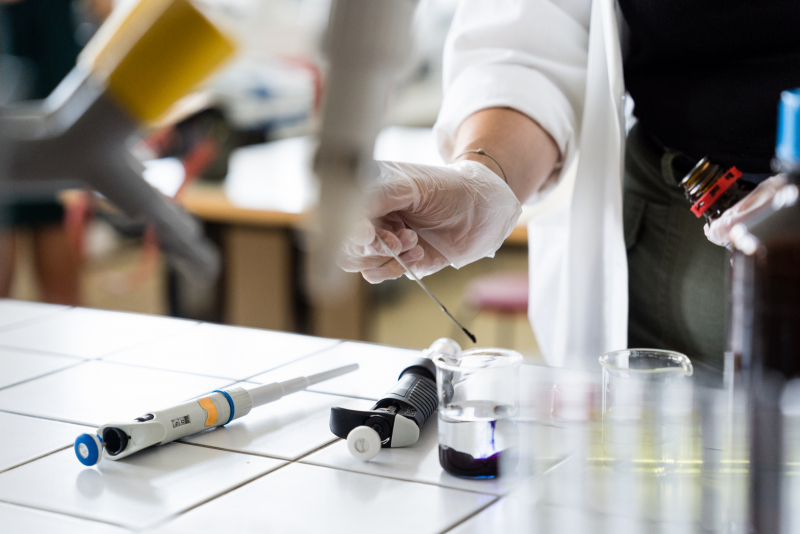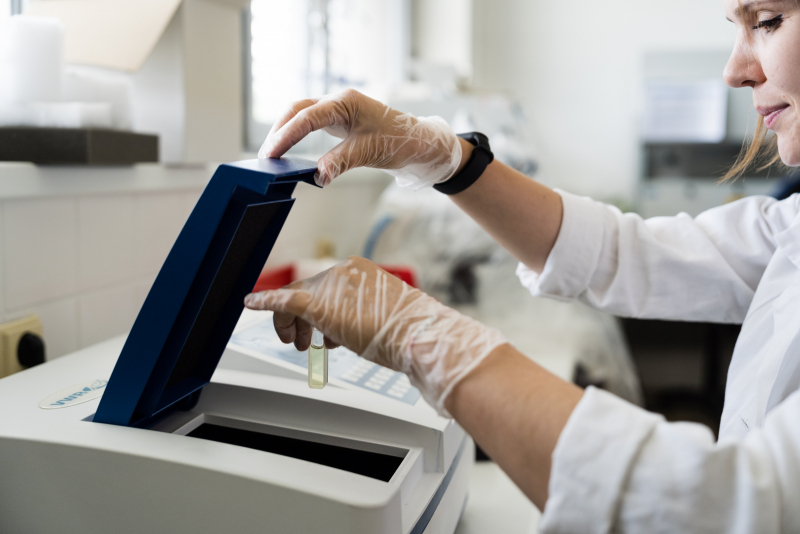Ideas and discoveries
We can improve the quality of life of the whole population, says Ivana Márová

While discussions are going on about whether it is not a relic to illustrate the absorbency of menstrual pads with blue fluid, Ivana Márová and her team from the FCH (Faculty of Chemistry) BUT (Brno University of Technology) have no problem not only to call things by their real names, but to build two research projects on them. The laboratories are testing whether it is possible to add an indicator of emerging disease, worsening diabetes or dehydration to incontinence devices. At some point in our lives, everyone may need nappies or pads, whether they are a toddler, an adult woman or a senior citizen. So why not add another useful feature to these tools?
“It should be a warning monitoring system. For example, if people with diabetes see on the indicator that they are in the acidic pH range, they need to make sure they have a supply of medication. People can also monitor their drinking regime by changing the pH and replenish fluids in time,” Ivana Márová says.

At the Faculty of Chemistry of the BUT she is the head of the Department of Food Chemistry and Biotechnology and in recent months has been focusing together with the company Fide from Brtnice on two research projects on sanitary products. In one of them, they are together trying to design an indicator layer that could be added to existing pads and nappies and could warn the user, for example, of an emerging infection or dehydration by simply changing its colour.
“Most of our population has had urinary tract infections at least once in their lifetime. Those who have been through it know how difficult and long it is to heal inflammation, because bacteria in the urinary tract persist for a long time. Catching the sickness as early as possible would be very useful for successful treatment,” emphasises the professor of biochemistry, the main purpose of the research. With her colleagues, she is trying to find pH indicators that are sensitive enough, and ideally natural, to tell if something is wrong in the body by a change in colour.

In layman's words, the surface of such an insert or diaper would act as a litmus test. “Normal urine pH ranges from 5.5 to 7. A more acidic pH is associated with dehydration, which is especially important to detect in older people. It can also detect some metabolic problems such as diabetes or ketoacidosis coma. An alkaline pH, on the other hand, is indicative of a bacterial infection,” explains the scientist with examples.
Experts not only look for the best composition of pH indicators, but must choose those whose colour change is unambiguous and visible at first sight. In the best case scenario, the colour of this special coating could not only highlight a health problem, but also reveal the likely cause, Ivana Márová hopes: “Bacterial urinary tract infections are almost always caused by E.coli bacteria and the predominant yeast infection is due to Candida albicans yeast, but these are not the only causative agents.”
Keep dry and cool even at a ripe old age
Another related research project could help increase comfort and quality of life, especially for seniors who have to wear diapers. Today's sanitary napkins already have extremely absorbent substances in them and can thus ensure a dry feeling for a long time. However, along with the extension of shelf life and increase in absorbency, the problem of decomposing urea turning into ammonia can occur. And from the name it is possible to deduce that the complication may be the smell.

“However, if a layer that is in contact with the skin is well manufactured and at the same time natural substances that limit the decomposition of urea are added to the absorbent layer, the formation of ammonia is reduced, the odour is reduced and the usability of the aid is prolonged. Overall, this will increase comfort for the elderly and their surroundings. This procedure is also applicable to other incontinence aids and baby diapers. We even have a functional sample already,” summarizes the project leader from BUT.
The two projects are complementary and Fide could market the technology as an extension of its range of products for all ages once the patent is registered.
“When you consider that our republic has ten and a half million inhabitants, five and a half million of whom are women, and that menstruation affects every one of them at some point in their lives, that's quite a sample. Statistics also show that about 3.2 million women come into contact with some kind of urogenital infection at least once in their lifetime. Life expectancy is increasing and the population is ageing, but at the same time more children are being born than ever before. Our aids can relate to every period of human life and their development seems to me to be interesting and much needed innovative work,” concludes Ivana Márová with hope.
(tk)
Nilmore's circular clothing allows you to use the fibre repeatedly
Research from FCH BUT has contributed to a better understanding of cement-free concrete. The finding were also published in prestigious journals
They were looking for a way how to supress the negative effect of zinc on cement. They developed a material with even better properties
Cheaper, better quality and eco-friendly. FCH BUT researchers create new dextrin adhesive
Why does the Greenland shark live to be 400 years old? Scientists from FCH BUT want to discover the longevity gene